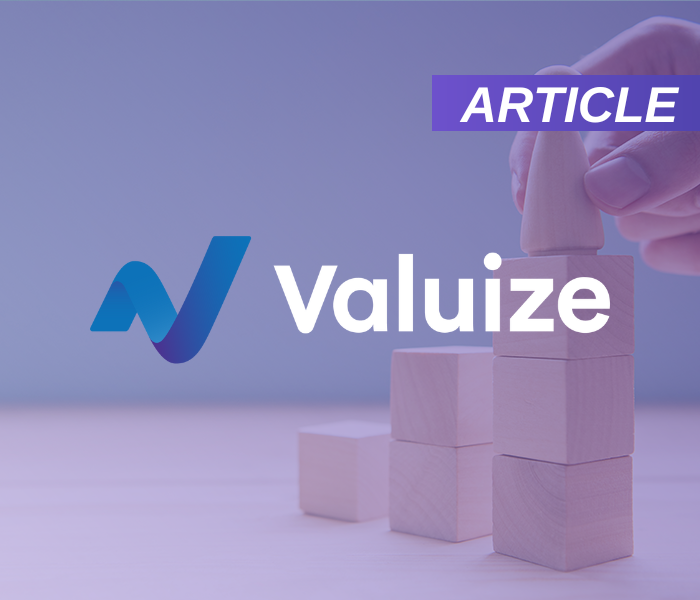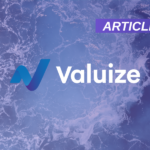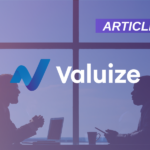What’s more important in your company: landing that new prospect or expanding the revenue of that existing customer? The latest SaaS Survey from David Skok and KBCM Technology Group suggests there’s one clear answer coming from leading organizations. SaaS expansion revenue is the economic lifeblood of recurring revenue for companies that wish to grow.
As customer success experts, we at Valuize take pride in studying the critical role that recurring revenue economics plays in the sustainable growth of companies in the subscription/consumption economy.
The annual SaaS Survey, now in its 7th year, is one of many great educational resources on this topic, and delivers excellent insight into the growth and operations of SaaS companies. You can—and should—use it as a way to benchmark your own business goals and results.
The median survey respondent achieved just 19% of their annual recurring revenue (ARR) from successful expansions and upsells, according to the 2018 survey. This almost doubled in 2019, to 37%, with best-in-class hovering just north of 50% of ARR coming in from SaaS expansion revenue. This is a trend worth watching.
A winning SaaS expansion revenue strategy
You must leverage the high efficiency of acquiring expansion ARR (when compared to net new ARR) across as large a percentage of your total revenue achievement as possible if your company wants to drive sustainable growth and command the top market valuations. This year-over-year comparison of the survey results highlights that organizations are hearing this message.
It’s now clear that SaaS expansion revenue from within your existing customer base will put you on the right side of ‘The Rule of 40%’. This elite status will help skyrocket your company valuations into the stratosphere.
In Brad Feld’s article ‘The Rule of 40% for a Healthy SaaS Company”, he provides a simple benchmark to measure the balance between the growth and profitability of your SaaS company. If you want to drill into why such a balance is critical for your SaaS business, check out Dave Kellog’s two articles on the 2016 SaaSacre.
The Rule of 40% is: Your Growth (G) rate + your Profit (P) should equal or exceed 40%. The SaaS Survey uses this rule as an index to measure respondents with over $10M in ARR.
The results? The median growth + profit index for this group was 19%—not even halfway to the Rule of 40% benchmark, therefore supporting the prestige that SaaS companies above the 40% threshold carry.
The survey provides a breakdown of the unit economics and other key characteristics of those respondents above the 40% benchmark and those below. Higher SaaS expansion revenue, lower gross revenue churn and, therefore, higher net revenue retention are common across all SaaS businesses operating above the 40% threshold compared to those below it.
| Above the 40% threshold | Below the 40% threshold | |
| Gross Revenue Churn | 13% | 12% |
| Net Revenue Retention | 109% | 102% |
| % of Expansion ARR | 42% | 36% |
You must incentivize your teams to achieve best-in-class expansion metrics. Median expansion commission rates are nearly as high as commissions for new direct customer sales (9% vs. 10%), according to the survey results. However, simply dangling the right carrot in front of your teams will not, alone, drive your company to score category-leading SaaS expansion revenue.
Customer success drives SaaS expansion revenue
The design of your customer success strategy is the key to the success of your SaaS expansion revenue model, and should enable your sales and/or customer success teams to:
- Identify customers with the ideal health profile for expansion
- Understand which new outcomes a) would drive the highest value realization for each customer identified, and b) can be delivered effectively and efficiently with each customer based on their current states
- Use product, industry and customer-specific knowledge to explain the ROI of these new outcomes and how that ROI would be achieved by the customer through increased adoption of your product(s)
- Leverage strong customer stakeholder relationships rooted in the quantified success of achieving measurable outcomes together in the past
You must combine and complete these four steps to help drive customer decisions to add users, access additional parts of your product(s) or increase product consumption. We use the Valuize Framework with our clients to ensure their customer success strategies enable these four steps to deliver results across their customer segments.
Learn more about how to scale customer expansion with Valuize.






